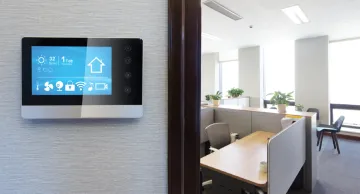
Adults in industrialized nations spend roughly 90% of their lives indoors. Those environments affect us as individuals – patient recoveries in hospitals, for example – and as societies, e.g., impacting productivity and, by extension, economies.
Altaf Engineer, associate professor in the University of Arizona College of Architecture, Planning and Landscape Architecture, is working on several projects to make indoor environments healthier, for both crisis response and everyday well-being.
Research to create “smart buildings” is developing networks driven by data in which ventilation and other systems automatically respond to environmental conditions in real time. This became even more important during the pandemic, which highlighted a critical health management gap: lack of systems that simultaneously monitor and improve air quality. Another project explores how ambient light and color in an environment can influence perceived temperature – people may feel warmer around reds and oranges, for example.
Study participants are equipped with various sensors worn on their wrists, head, chest – and even in their shoes – to monitor light exposure, activity, sleep quality, heart rate variability (an indicator of stress) and more. At the same time, stand-alone sensors monitor their environmental parameters, such as air quality, temperature and humidity.
Algorithms analyze the continuously amassing data to reveal how environmental factors drive changes in heart rate, stress response and other physiological responses – knowledge that can inform healthier renovations and shape new principles for evidence-based, healthful building design.
